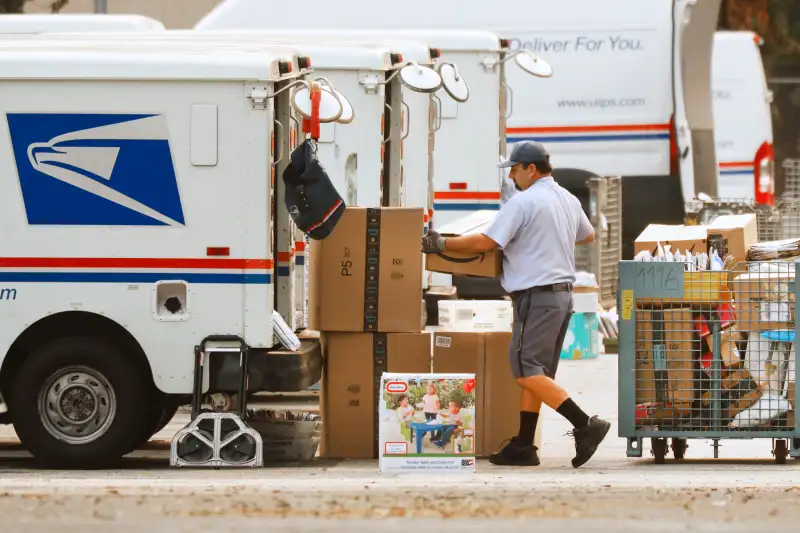Mail Delivery Is About to Get Slower and More Expensive

The Postal Service — the government agency, not the indie band — is making major changes to the mail. Americans may see higher prices and slower delivery times in the coming weeks as the organization tries to get itself back on track financially.
The USPS announced Tuesday that it hopes to temporarily adjust rates for the 2021 holiday season. The cost of sending commercial and retail boxes, parcels and envelopes could increase by as much as $5 between Oct. 3 and Dec. 26, depending on the shipping method used. International rates wouldn't be impacted, and domestic rates would go back to current prices after the holiday rush.
In a news release, the Postal Service said the surcharges are aimed at "providing the agency with the revenue to cover extra costs in anticipation of peak-season volume surges similar to levels experienced in 2020." The plan is subject to review by the Postal Regulatory Commission.
The proposed rate increases are just the latest development out of the USPS, which has been shaking things up lately in a bid to reverse trends that have seen it lose $87 billion in the past 14 years.
Stamp prices, for example, are going up on Aug. 29. First-class postage will jump from $0.55 to $0.58.
On top of that, starting Oct. 1, the USPS is planning to add time to the service standard for some first-class mail and periodicals. Instead of promising to get first-class mail from sender to receiver in one to three days, as it currently does, it could soon take up to five days to deliver depending on how far it has to go.
This doesn't necessarily mean every single medical bill, 401(k) statement and Lands' End catalog will take a week to reach you. The USPS says most first-class mail will still arrive within three days (or two days, if it's not traveling that far). However, its true impact may vary by location: A Washington Post analysis found that consumers in states like Nevada, Florida and Montana will start experiencing significant mail delays if the plan goes through.
The Postal Service is trying to get away from using air transportation, which it claims is expensive and unreliable due to factors like bad weather, limited cargo space and air traffic. But the proposal is unpopular among critics of Postmaster General Louis DeJoy. At a meeting last week, Ronald Stroman, who serves on the board for the agency, called it a "strategically ill-conceived" idea that would result in "relatively minor savings," according to Government Executive.
DeJoy, however, indicated he's moving forward anyway. So you may want to plan to get those Christmas cards in the mail early this year.
More from Money:
Why Buying a Bunch of Stamps Won't Save the USPS
That 'Package Delivery' Text You Just Got Is Probably a Scam
How to Get Cheap Holiday Shipping and Make Sure Your Gifts Arrive on Time
